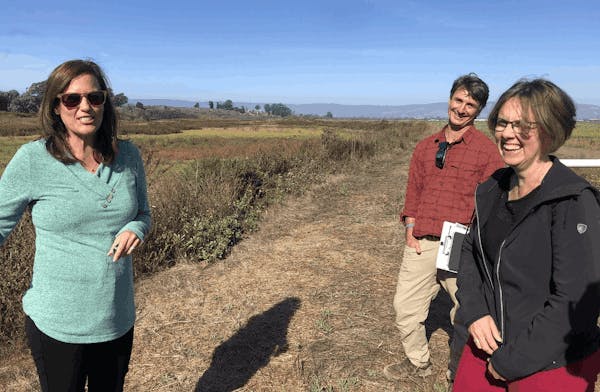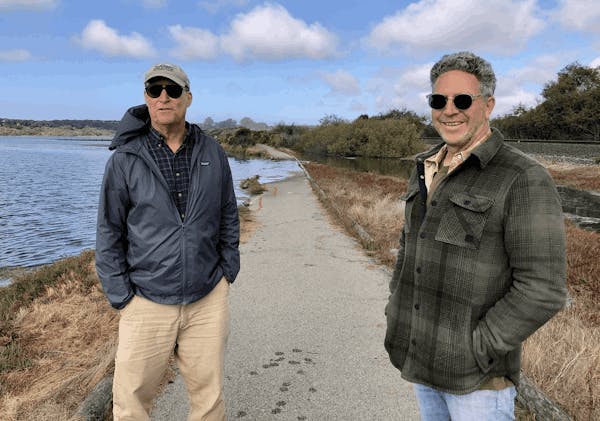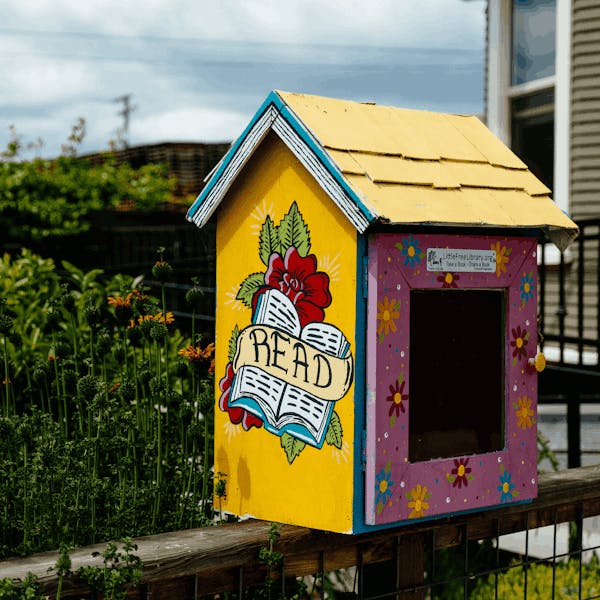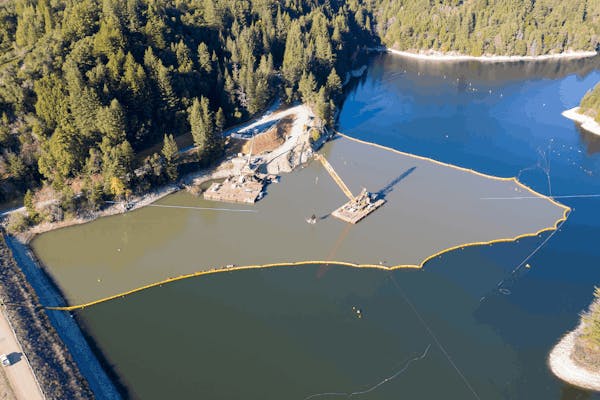
Partners in Conservation
New Solutions to Build Climate Resilience
In July 2024, the California Marine Sanctuary Foundation (CMSF) was awarded $71.1 million through the Climate Resilience Regional Challenge administered by the National Oceanic and Atmospheric Administration (NOAA). The award is part of a $575 million effort funded through the Biden Administration’s Inflation Reduction Act to increase coastal communities’ resilience to extreme weather events brought on by the impacts of climate change. The NOAA grant is the one of the largest federal grant awards in Central Coast history and is the fruition of a longstanding effort led by CMSF Executive Director Robert Mazurek. CMSF will lead a coalition of partners in local governments, academic institutions, and nonprofit organizations—including the Community Foundation—to implement programs to build resilience in coastal communities impacted by storm surge, sea level rise, and flooding as well as areas prone to wildfire in coastal watersheds. Through the CMSF grant award, the Community Foundation will establish the $1.6 million Monterey Bay Climate Adaptation Revolving Fund.

Facing the Inevitable
A hydrologist by training, Bryan Largay is the Conservation Director at the Land Trust of Santa Cruz County where he leads regional strategy and long-term projects and until recently, oversaw the stewardship of more than 16,000 acres. He says, “I’ve spent a lot of time looking changing baselines: what are the implications of climate change on major events: flood, ocean swell events, drought, and fire. Fires and storms are a natural phenomenon. But as we are witnessing daily around the globe, climate change means they happen more often and intensely than they did in the past.”
In a community where families are still recovering from the CZU fires in 2020 and the winter storms and flood of 2023, Santa Cruz County is perpetually on edge for the next climate disaster.
“We need to focus our attention on becoming a more resilient society in the face of the inevitable,” says Bryan. “But climate disaster planning and recovery are complex huge financial burdens that start piling up on top of each other. We need to start doing things differently. How can we make the landscape more resilient to help us protect the neighborhoods and habitats we care for.”

A Call for Innovation
Becky Smyth, the West Coast Regional Director for NOAA’s Office of Coastal Management explains that the Climate Resilience Regional Challenge program was designed to foster the innovation for which Largay and leaders across the country are calling.
She says, “Climate change is creating new challenges we've never faced before. We know we need new answers and new opportunities for addressing the issue. In the call for applications, we specifically noted that innovative financial approaches were eligible, including revolving loan funds.”
Bryan, aware of the Community Foundation’s revolving loan program, encouraged Robert Mazurek, the Executive Director of the California Marine Sanctuary Foundation and leader of the funding effort to include the Foundation in the grant application.
Robert quickly agreed, noting that although there are 21 subcontractors in the grant and a 750-page proposal that specifically maps out all the projects, there are still a lot of unknowns. “Undoubtedly, there will be unforeseeable immediate needs that communities are going to face over the next five years when it comes to climate change adaptation and resilience. In other words, we don’t know what’s coming next. The $1.6 million in the Monterey Bay Climate Adaptation Revolving Fund will be there to help us meet the unexpected.”

Responsive Investments & Impact
The Community Foundation started making low-interest loans in 2015. Funds are loaned to nonprofits and businesses solving social challenges and spurring economic growth on key issues in our community. Unlike traditional philanthropy which typically relies on grants, our impact investments are structured as flexible, cost-effective loans that are expected to be paid back, thus recycling the dollars to consistently fund new initiatives into the future.
Becky from NOAA notes that of all the projects funded by the Climate Resilience Regional Challenge, Community Foundation Santa Cruz County is the only community foundation in the country who is administering a revolving loan fund.
She sees the Monterey Bay Climate Adaptation Revolving Fund as an exciting opportunity to make progress on nature-based climate adaptation projects that get stalled, especially in underserved communities who don’t have access to cashflow.
“Addressing climate impacts requires rapid action. And often, federal funding has long delays because there can be lots of bureaucracy to protect the public's money.”
She recognizes that governmental systems can be a bottleneck, especially when it comes to funding innovative solutions. “The permitting can take a while because it’s new. By the time you’ve worked through the permitting, and gotten everything approved, it’s not matching the funding cycle for the implementation. The revolving fund can loan out the cash needed to get the project started while waiting for the funding to come through.”
“Quick and inexpensive capital from the revolving loan fund may very well be the tool to help complex conservation, restoration, and nature-based climate solutions reach the finish line,” says Susan True, CEO of Community Foundation Santa Cruz County. “In our experience, a flexible loan fund can be the difference because it makes the acquisition or investment in lands with important climate resilience values more affordable.”

Building Trust Step by Step
Bryan says, “Our government systems weren’t built for repeated disasters.” He hopes that the fund will be a critical tool in the wake of the next disaster when FEMA or state money is slow in coming. “Having our Community Foundation be more responsive and adaptive than large government systems is essential.”
He sees that trauma from the CZU fires is making collaboration challenging. “Folks are still angry and scared. Too often, when we’re figuring out how to work together to manage vegetation or create evacuation routes, the conversation devolves into anger at how slow FEMA payments and the permitting process are.”
Bryan knows that this money won’t help every survivor of a climate disaster heal. But he hopes the Monterey Bay Climate Adaptation Revolving Fund is an important step in climate resiliency and that it will also be a big step towards strengthening community.

A Downpayment on the Future
Everyone involved in this historic project knows that the $71 million is a small downpayment on what the Central Coast is going to need to face the future and that the $1.6 million is just the seed money for the revolving fund.
“We needed this fund to start small, figure out the rules of the road, and grow this as a tool in the Community Foundation’s sophisticated toolbox,” says Bryan.
As the Central Coast embarks on this new era, Robert acknowledges that effective collaboration is the beating heart of the work ahead. “This is a generational challenge and too often we are siloed. None of us can solve this problem alone and we now have a remarkable opportunity to work together as a region to build climate resiliency in ways we never have before.”
Susan says, “The Community Foundation is at our best when we support solutions to problems too big to solve alone. We have incredible expertise and dedication up and down the Central Coast to build a more resilient tomorrow and we are honored to help connect the experts, provide unique access to financial resources, and develop long term resources for our shared future.”


